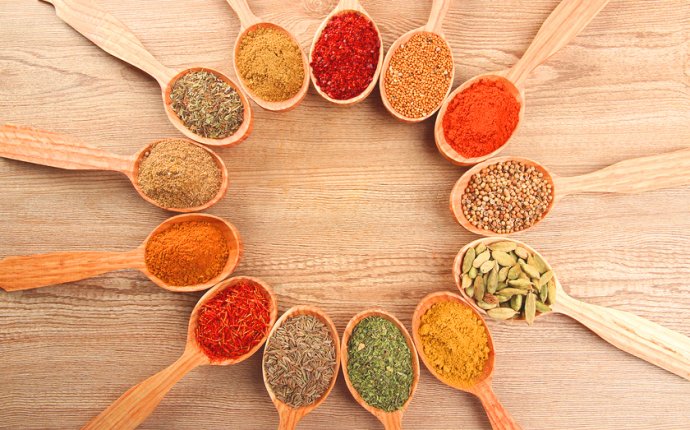
Ayurvedic Spices
Did you know it is possible for your very own kitchen to be like a mini clinic, equipped with medicinal spices that can heal and prevent ailments ranging from physical pain to indigestion to itching to headaches?
It is, thanks to the ancient science of Ayurveda, a medical system from India that is also the sister science of yoga. Stemming from two root words: "Ayush, " meaning "life, " and "Veda, " which means "study or knowledge of, " Ayurveda is the knowledge or study of life.
Yes, it really is that expansive.
As a student, teacher and practitioner of Ayurveda, using these Ayurvedic spices regularly has contributed to making my kitchen like a magical medical clinic, in which I feel inspired and empowered to create as much health as I wish, with my very own two hands.
1. Ajwain Seeds (Bishop's Weed)
My personal mantra every time I have any kind of physical pain (which is fortunately much rarer now, thanks to living by Ayurveda's healing wisdom) is to reach for Ajwain. This Ayurvedic herb is an extremely potent painkiller. I always feel almost instantaneous relief from pain upon consuming Ajwain seeds. This herb is also incredibly helpful for bloating, gas, and constipation.
Ways to use:
- Ajwain seed tea: boil Ajwain seeds in water. Allow the Ajwain tea to cool to a temperature at which you can drink, then enjoy.
- Cook with ajwain: This is especially helpful to do if you are experiencing chronic gas, bloating and constipation. This spice can be added to almost every savory dish, in its seed form, dry roasted, or as a powder (just blend the seeds in a blender or Magic Bullet).
2. Saffron
Many aspects of Indian culture and spirituality have practical, as well as sublime, purpose. In Hindu spiritual rituals, a red dot is often symbolically placed on a person's forehead, in between their eyes (often referred to as the 'third eye'), as a blessing to awaken one's inner wisdom. Did you know that the practical reason for this placement of saffron is to act on the blood tissue of the body (called rakta dhatu) in a way that prevents and treat headaches?
Saffron is additionally utilized to help with reducing vomiting. It also benefits the skin, improving the complexion, and serving as a key ingredient in many all-natural Ayurvedic beauty regimens.
- Saffron milk: boil milk with sugar, and add a few strands of saffron to it for a delicious and beautifying recipe to enjoy in the morning or at night (at least three hours after dinner).
- Saffron paste: rub saffron strands with milk and apply the resultant paste to reduce dark circles around your eyes.
- Saffron rice: cook rice with a few strands of saffron in it for a delicious accompaniment to your favorite savory dishes.
3. Turmeric
This herb has an amazing list of benefits. It helps boost immunity, which makes it a powerful health prevention tool, found in every Indian household. Turmeric also benefits the digestive system by appetizing food. It purifies the blood. Turmeric improves complexion and is another ingredient often found in Ayurvedic beauty recipes and home remedies. This herb helps with itching, swelling, diabetes, obesity, rheumatoid arthritis, and post-trauma wound healing. It is so helpful for wounds, in fact, that in India, Johnson & Johnson has created its very own turmeric-infused band-aid!














